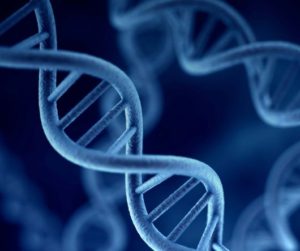 This week’s parasha is Vayetze, where we read of Jacob’s arrival in Charan and the details of his twenty-year sojourn there. During this time, Jacob married (twice), had a dozen children, and toiled for his cruel father-in-law Laban. Laban recognized that he had been blessed exceedingly on account of Jacob’s presence, and offered him a new wage for his labour. By this point, Jacob knew not to trust the sly Laban, and asked simply for ownership of all the speckled and spotted sheep. Since these imperfect-looking sheep were few in number, Laban readily agreed. It appears that both Laban and Jacob were well aware of the basic principles of genetics. Today, we know that sheep have 17 or so different colour alleles, and white colour is the dominant one.
This week’s parasha is Vayetze, where we read of Jacob’s arrival in Charan and the details of his twenty-year sojourn there. During this time, Jacob married (twice), had a dozen children, and toiled for his cruel father-in-law Laban. Laban recognized that he had been blessed exceedingly on account of Jacob’s presence, and offered him a new wage for his labour. By this point, Jacob knew not to trust the sly Laban, and asked simply for ownership of all the speckled and spotted sheep. Since these imperfect-looking sheep were few in number, Laban readily agreed. It appears that both Laban and Jacob were well aware of the basic principles of genetics. Today, we know that sheep have 17 or so different colour alleles, and white colour is the dominant one.
For those who have forgotten high school biology: An allele is a variation of a gene. So, for example, all humans have a gene for eye colour, but have different alleles that code for the varying colours: some have alleles for blue eyes, while others have brown eyes, etc. Each person has two alleles for every gene – one from their mother, and one from their father. Certain alleles are “dominant”, while others are “recessive”. Dominant alleles are far more likely to be expressed. In humans, brown eye colour is dominant to blue eye colour, which is why some 55% of people have brown eyes, while only about 8% have blue eyes.
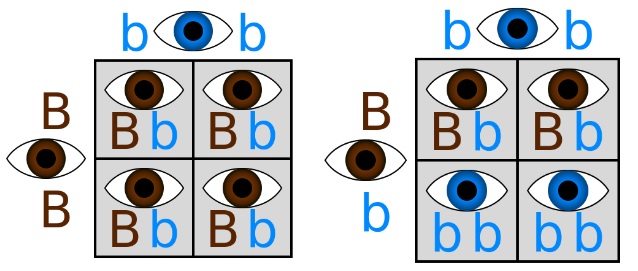
Basic “Punnet squares” showing the probabilities of eye colour for the children of fully brown-eyed and blue-eyed parents, and a brown-eyed parent who carries a blue allele. (Courtesy: The University of North Carolina at Chapel Hill)
White is the dominant allele for sheep colour, so Laban assumed he was getting a terrific deal from Jacob, who was apparently ignorant of sheep genetics. In reality, Jacob knew sheep genetics quite well, and had something else up his sleeve. He only offered Laban this deal because he knew the greedy Laban would readily agree to it. So, how would Jacob outwit his father-in-law?
A Brief Introduction to Epigenetics
Jacob was evidently a far more knowledgeable geneticist than Laban, as he was aware of a concept that has only come to light in recent decades, called epigenetics. Epigenetics refers to various layers of heritability and genetic effects which are above, or outside of (hence the Greek prefix epi), the actual genetic code. In 2008, scientists defined an epigenetic trait as “stably heritable phenotype resulting from changes in a chromosome without alterations in the DNA sequence.” In simple terms: the chromosome that contains the genes is altered in some way without affecting the DNA sequence (the genetic code) itself. That alteration is heritable, too, and passed down from one generation to the next.
A number of epigenetic mechanisms have been discovered. The most common are methylations and acetylations, where small molecules are attached or removed from the DNA strand, causing it to coil either more tightly or less tightly. When the DNA coils more tightly, the gene is rendered inaccessible, and cannot be expressed. If uncoiled, the gene is exposed, and can be translated into the protein it codes for, thus expressing the trait.
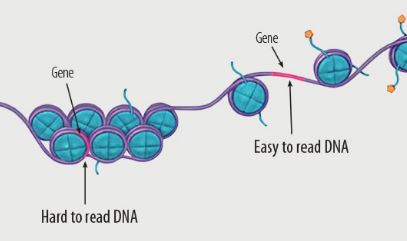
Coiling of DNA and gene expression. (Courtesy: National Institutes of Health)
While epigenetics is quite complicated, its implications are tremendous. What it means in practical terms is that even though a person has a certain gene, that gene does not necessarily have to be expressed, as it can be silenced through epigenetic mechanisms. For example, a person who has a gene that predisposes them to cancer, God forbid, could potentially have that gene suppressed, thus eliminating their increased cancer risk. (Though they don’t work in this precise fashion, epigenetic cancer drugs are now available.) This also applies to people who might be genetically predisposed to obesity, diabetes, Alzheimer’s, or theoretically, any trait at all. A person who has both brown and blue alleles does not necessarily have to have brown eyes (which is what we would expect based on principles of classical, or Mendelian, genetics). The brown eye allele can be silenced, allowing the blue allele to be expressed fully.
The same is true for Jacob’s sheep. While the alleles for speckled and spotted sheep are recessive, the dominant white allele can be suppressed, resulting in more speckled and spotted sheep. In the Torah, we read how Jacob took tree branches and stripped away some of their bark to expose the inner white layers so that their pattern resembled that of the speckled and spotted sheep. He then placed these branches in front of the white sheep that were mating, and this resulted in the white sheep producing more speckled and spotted offspring. In this way, Jacob was quickly able to multiply the number of irregular-looking sheep in the flocks, increasing his own wealth, and leaving Laban in utter surprise.
What does science have to say about this? Is it really possible for the white sheep to produce speckled and spotted offspring just by looking at speckled and spotted tree branches? Which factors actually affect epigenetics?
The Epigenetics Revolution
In northern Sweden lies a small, isolated town called Överkalix. This town kept detailed historical records, including births, illnesses, and deaths, as well as harvests and food prices. Researchers started poring over this data and noted a number of emerging patterns. Surprisingly, those who grew up in times of relative abundance tended to live shorter and sicker lives, while those who grew up in times of relative famine were healthier and lived longer! Even more shocking was that these traits passed on to their children and grandchildren. The grandsons of those who grew up in times of abundance lived roughly six years less than grandsons of those who grew up in times of famine!
The Överkalix study opened the door to much more research on the subject, and today we know that not only does food impact our epigenetics, but so does smoking, alcohol, exercise, and just about every lifestyle choice we make. Moreover, recent studies find that not only do our actions impact our epigenetics, but even our thoughts do! In 2013, scientists discovered that meditation affects epigenetic mechanisms and results in, among other things, less inflammation in the body, better stress responses, and faster mental processes.
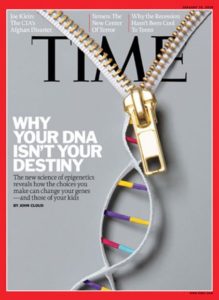
TIME Magazine Feature on Epigenetics
Epigenetics has brought about a revolution in biology, and a new realization that we are not slaves to our genome. We are very much in control of how our genes operate, and seemingly every choice we make affects our health and wellbeing, as well as the health and wellbeing of our children and grandchildren, since these epigenetic patterns are heritable. This is one of the most enlightening and liberating scientific findings, putting each person in the driver’s seat of their biological fate. It should also motivate us to make healthy lifestyle choices because, even if we might not care so much about our own health, the health of our offspring is directly impacted by our choices.
The Return of Jacob’s Sheep
If meditation plays a role in how our genes are expressed, there is no reason why other mental processes cannot do the same. By visually exposing his sheep to speckled and spotted images, Jacob may very well have triggered an epigenetic change resulting in suppression of white alleles. Neurologists have long known that there is essentially no difference in brain patterns when a person is literally seeing something versus when they are simply visualizing the same thing. If mental visualizations like meditation can affect the epigenome, then why not actual visual displays? Armed with this knowledge, Jacob outwitted his father-in-law and became an exceedingly wealthy man.
Of course, one cannot deny God’s role in the process, as Jacob himself explained to his wives (Genesis 31:7-9):
…your father mocked me and changed my wages ten times, but God did not permit him to harm me. If he would say, “Speckled ones shall be your wages,” all the animals would bear speckled ones, and if he would say, “Ringed ones shall be your wages,” all the animals would bear ringed ones. Thus, God separated your father’s livestock and gave it to me…
Changing one’s epigenetics is not so simple! As with everything else, a little help from Above is always needed. Jacob put in his effort by exposing the animals to stimulating sights, and God took care of the rest.
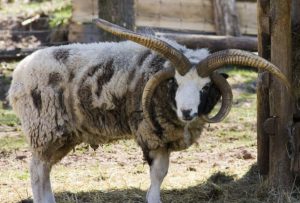
Jacob’s sheep are unique not only in their colour, but also in that the rams have extra horns.
Interestingly, this week saw the arrival of 119 “Jacob’s sheep” to Israel. This ancient breed of sheep originated in the Middle East approximately 5000 years ago. They were extirpated from the land of Israel long ago, but thankfully some survived and were brought across North Africa to Europe and finally America. The rare speckled and spotted sheep are in the Holy Land once more, perhaps a sign of the forthcoming return of all of Jacob’s children to their ancestral home.
The above is an excerpt from Garments of Light: 70 Illuminating Essays on the Weekly Torah Portion and Holidays. Click here to get the book!

